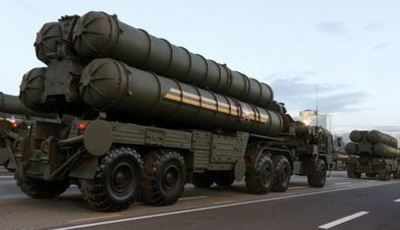India closer to getting game-changer Russian S-400 Triumf missile
September 6, 2017

Moving a step closer towards acquiring the formidable Russian S-400 Triumf air defence system, the Indian Air Force has completed the trials of the missiles which can shoot down fighter and surveillance aircraft, cruise missiles and drones at the range of 400 kms over enemy airspace itself.
"The field evaluation trials of the Russian air defence system have been completed by the Indian Air Force in Russia and they have been quite successful. The trials were conducted on two separate occasions and it performed to the satisfaction of the users," government sources told MAIL TODAY.
After the completion of trials, the defence ministry will now start the process of initiating the contractual negotiations with Rosoboronexport, the Russian agency which handles defence deals with foreign countries, including the fixation of price, the sources said.
Despite the high price tag attached with the five S-400 systems India is planning to acquire, the Indian Air Force is extremely happy to get the weapon system as it will give them an edge over Pakistan and bring them on par with the Chinese who have already installed this system, the sources said.
The missiles system manufactured by Russia's Almaz Antey consists of a set of radars, missile launchers and command posts and the radar of each system can track between 100 and 300 targets simultaneously. With a tracking range of 600 km, the missile system can engage up to 36 targets simultaneously within a range of 400 km.
The missile system gives India the capability to track all Pakistani air bases while bring the Chinese assets in Tibet in its striking range. An intergovernmental agreement on the sale of S-400 was signed in October 2016 at the 17th India-Russia summit between President Vladimir Putin and Indian Prime Minister Narendra Modi, which was earlier speculated to be pegged at Rs 54,000 crore.
After the top level negotiations, the deal is likely to cost less than Rs 40,000 crore and may go down even further in the tough negotiations on price with the Russians.
The Russian missile system would be used by the IAF, along with the other new air defence systems coming up in the country including the India-Israel joint venture Medium range-Surface to Air Missile system and the SPYDER systems that India recently acquired from Israel.
India has also developed its own air short range air defence systems including the Akash air defence missiles while the Missile complex of DRDO has also successfully tested the new Quick Reaction Surface to Air Missile system.
Air defence missile systems which can strike incoming targets at different ranges are deployed in tandem all over the world so that if one misses, there is a backup system to take down the enemy at the other level.
India closer to getting game-changer Russian S-400 Triumf missile
September 6, 2017

Moving a step closer towards acquiring the formidable Russian S-400 Triumf air defence system, the Indian Air Force has completed the trials of the missiles which can shoot down fighter and surveillance aircraft, cruise missiles and drones at the range of 400 kms over enemy airspace itself.
"The field evaluation trials of the Russian air defence system have been completed by the Indian Air Force in Russia and they have been quite successful. The trials were conducted on two separate occasions and it performed to the satisfaction of the users," government sources told MAIL TODAY.
After the completion of trials, the defence ministry will now start the process of initiating the contractual negotiations with Rosoboronexport, the Russian agency which handles defence deals with foreign countries, including the fixation of price, the sources said.
Despite the high price tag attached with the five S-400 systems India is planning to acquire, the Indian Air Force is extremely happy to get the weapon system as it will give them an edge over Pakistan and bring them on par with the Chinese who have already installed this system, the sources said.
The missiles system manufactured by Russia's Almaz Antey consists of a set of radars, missile launchers and command posts and the radar of each system can track between 100 and 300 targets simultaneously. With a tracking range of 600 km, the missile system can engage up to 36 targets simultaneously within a range of 400 km.
The missile system gives India the capability to track all Pakistani air bases while bring the Chinese assets in Tibet in its striking range. An intergovernmental agreement on the sale of S-400 was signed in October 2016 at the 17th India-Russia summit between President Vladimir Putin and Indian Prime Minister Narendra Modi, which was earlier speculated to be pegged at Rs 54,000 crore.
After the top level negotiations, the deal is likely to cost less than Rs 40,000 crore and may go down even further in the tough negotiations on price with the Russians.
The Russian missile system would be used by the IAF, along with the other new air defence systems coming up in the country including the India-Israel joint venture Medium range-Surface to Air Missile system and the SPYDER systems that India recently acquired from Israel.
India has also developed its own air short range air defence systems including the Akash air defence missiles while the Missile complex of DRDO has also successfully tested the new Quick Reaction Surface to Air Missile system.
Air defence missile systems which can strike incoming targets at different ranges are deployed in tandem all over the world so that if one misses, there is a backup system to take down the enemy at the other level.
India closer to getting game-changer Russian S-400 Triumf missile










